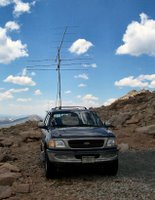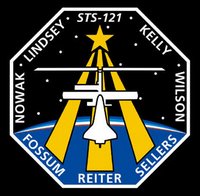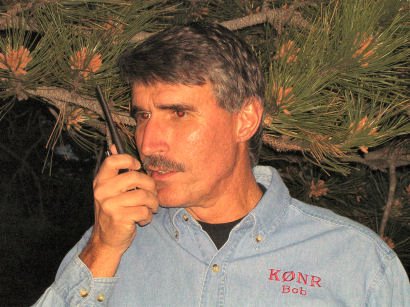CQ WW VHF Contest
 This past weekend was packed with family activities, so I wasn't sure if I was going to participate in the CQ WW VHF Contest. Finally, on Sunday morning, I decided to pack up and head to Mt Evans (14,000 foot mountain with a road to the top). Actually, the agreement with my spousal unit was that we were going on a mountaintop picnic that also happened to include a 2M / 6M ham station. I operated in the Hilltopper category (QRP power, operating for 6 hours or less).
This past weekend was packed with family activities, so I wasn't sure if I was going to participate in the CQ WW VHF Contest. Finally, on Sunday morning, I decided to pack up and head to Mt Evans (14,000 foot mountain with a road to the top). Actually, the agreement with my spousal unit was that we were going on a mountaintop picnic that also happened to include a 2M / 6M ham station. I operated in the Hilltopper category (QRP power, operating for 6 hours or less).The station was an FT-847 running 10W to a 3-element 6M Yagi and an 2M9 Yagi on 2 Meters. The antennas were on a 15-foot mast mounted on the hitch of my SUV.
I started operating around 1930 UTC and found 6 meters open to the midwest. Of course, 2 meters gets neglected by the single ops when 6 meter is hot, so not many QSOs on 2 meters. The contest ended at 2100 UTC, so my operating time was limited.
About 1.5 hours of operating netted:
36 grids on 6M, 2 grids on 2MNow I am wishing I had gotten up there early in the morning....maybe next year.
76 total QSOs
Score: 3116
The 2 band format is really nice for a simple portable or rover station. As long as 6 meter propagation is good, two bands is plenty of action. Also, the Hilltopper category works well if you can't spend the whole weekend playing radio.
73, Bob K0NR





